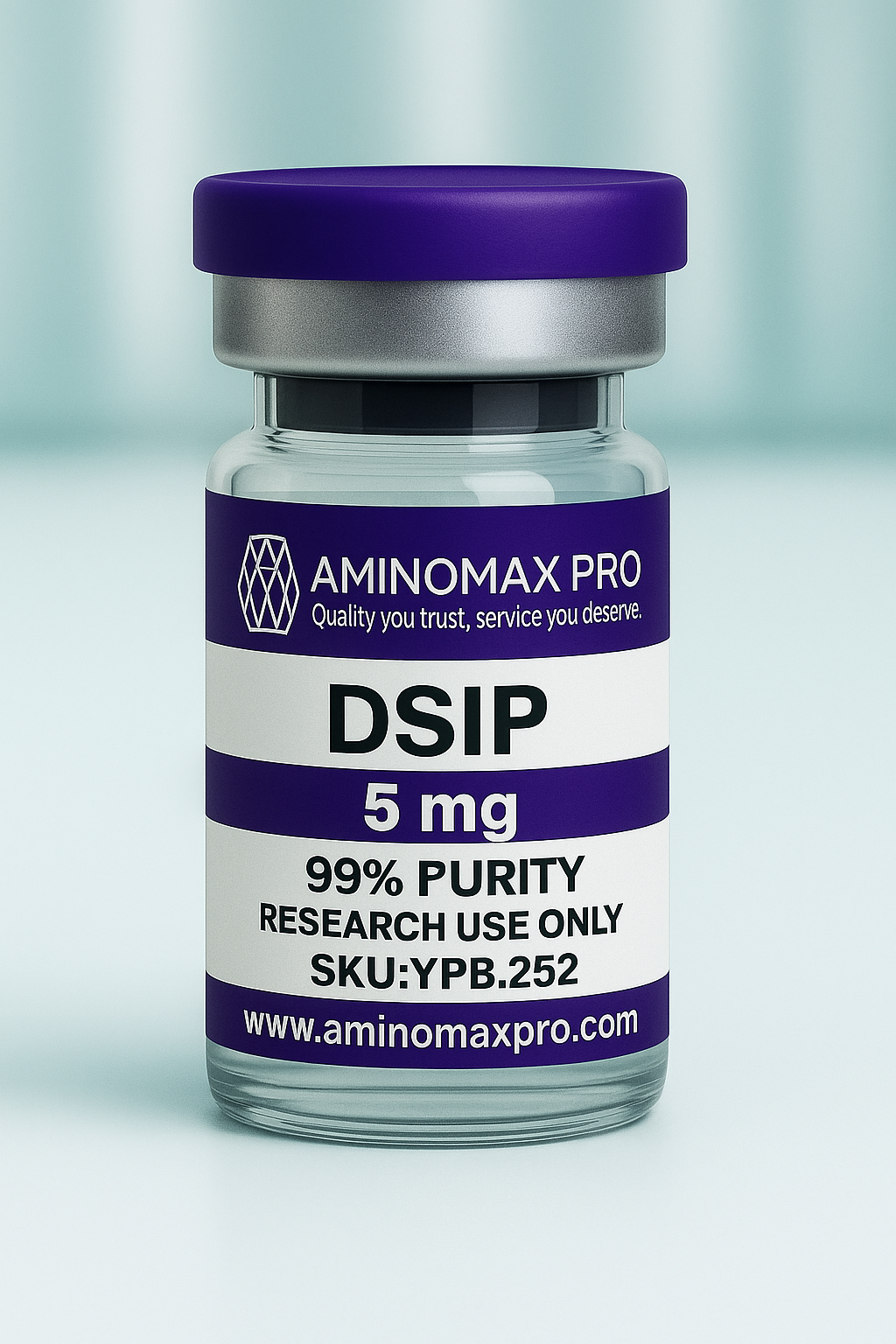Description
DSIP – Advanced Biochemical Mechanism & Pathway Profile
(Delta Sleep–Inducing Peptide – Nonapeptide Neuromodulator)
DSIP is an endogenous nonapeptide neuromodulator investigated for its influence on neuroendocrine signaling, stress-axis regulation, and sleep-associated neuronal pathways. Although its primary receptor has not been conclusively identified, research models indicate indirect modulation of GABAergic, glutamatergic, noradrenergic, and CRH-related pathways.
✅ Primary Signaling Systems Investigated
1. GABAergic & Glutamatergic Pathways
Studies report DSIP’s interaction with inhibitory/excitatory neurotransmission:
-
Upstream modulation of GABA-A receptor–linked chloride channels
-
Potential regulatory effects on NMDA receptor pathways and Ca²⁺ influx
-
Altered intracellular ion channel signaling influencing neuronal excitability
Downstream effects studied:
-
Changes in intracellular Ca²⁺-dependent enzymes
-
Modulation of CaMKII and PKC signaling
-
CREB phosphorylation in sleep-associated neuronal nuclei
2. Hypothalamic–Pituitary–Adrenal (HPA) Axis
DSIP is examined for influence on neuroendocrine gene transcription:
-
Indirect suppression models of CRH release
-
Interaction with ACTH and corticosteroid feedback pathways
-
Associated impact on POMC-derived peptide regulation
Genes often monitored in research:
-
CRH (Corticotropin-Releasing Hormone)
-
POMC (Proopiomelanocortin)
-
NR3C1 (Glucocorticoid Receptor)
3. Monoaminergic Systems
DSIP appears to modulate monoamine turnover and enzyme activity:
-
Tryptophan hydroxylase (serotonin synthesis)
-
Tyrosine hydroxylase (catecholamine synthesis)
-
Altered degradation via MAO-A/B (monoamine oxidases)
These changes are studied in relation to neuronal firing patterns, REM/NREM cycling, and circadian neurochemistry.
✅ Protein Kinases & Second-Messenger Systems
In vitro, DSIP exposure has been associated with:
-
PKA and PKC pathway modulation
-
MAPK / ERK phosphorylation in neuronal cells
-
Changes in cAMP and phosphoinositide signaling
-
Reduced oxidative-stress–induced caspase activation models
✅ Potential Receptor-Level Mechanisms (Research Models)
Although no single DSIP receptor is confirmed, evidence points to:
-
GABA-A receptor-linked chloride channel modulation
-
Possible regulatory interaction with NMDA receptor complex
-
Indirect effects on adenylate cyclase → cAMP → CREB pathway
-
Crosstalk with neurosteroid and neuropeptide systems
✅ Downstream Molecular Targets
| Category | Targets Studied |
|---|---|
| Neurotransmitter Enzymes | MAO-A/B, Tyrosine Hydroxylase, Tryptophan Hydroxylase |
| Kinase Systems | PKA, PKC, ERK1/2 |
| Receptors | GABA-A, NMDA receptor regulation (indirect models) |
| Gene Programs | CRH, POMC, NR3C1, CREB-mediated transcription |
| Cellular Markers | Caspase-3 (in stress-related neuron models) |
✅ Research Applications (Preclinical / In-Vitro Only)
DSIP is used to study:
-
Neuroendocrine stress-axis signaling
-
Sleep/wake cycle neurochemistry
-
GABAergic / glutamatergic balance
-
Monoaminergic enzymatic turnover
-
cAMP/CREB-driven neuronal gene expression
Research-Only Classification
This compound is provided strictly for in-vitro laboratory research.
Not for human or animal use, medical application, or diagnostic purposes.



